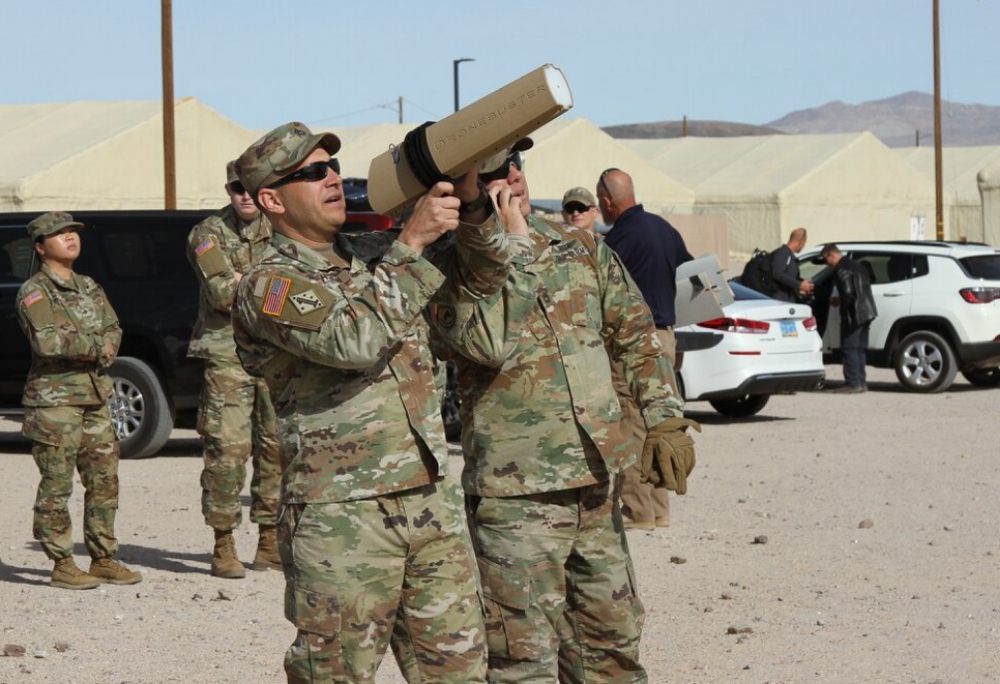Following an Army-led assessment, the Defense Department will be narrowing the number of different counter-small unmanned aircraft system solutions deployed by the joint force from about 40 to eight.
In November, the defense secretary delegated the Army to lead an effort to reduce redundancy in the development and fielding of various C-sUAS solutions by the services. The Army subsequently set up the Joint C-sUAS Office to conduct that assessment, and over the last few months the office has worked to narrow down the dozens of counter-drone systems fielded by the services.
“Our goal is to align existing and future Counter-UAS technology solutions to best address operational needs while applying resources more efficiently,” Maj. Gen. Sean Gainey, the JCO’s first director, said during a media call June 26, one day after the assessment results were announced. “This is really why the organization was stood up — to eliminate the redundancy that was being fielded.”
That assessment, which Defense Department leadership have approved, looked at approximately 40 systems, about 30 of which were primarily used for the C-sUAS mission, said the director. The assessment concluded that the joint force should move forward with fielding just eight different systems — a variety of fixed, mounted and dismounted solutions.
“So essentially moving forward, we will focus our investments,” Gainey said. “The services have each been assigned sponsor of each one of those systems, so as we move this forward as a joint approach, it will coordinate the future upgrades to these systems and the contracting of these systems across the joint force.”
C-sUAS systems that were not included in the final selection will be replaced by the approved systems, although JCO could not provide a timeline for how quickly this will take place, how much it will cost or how many units will need to be replaced across the services. Gainley noted that the services are currently conducting an analysis of how many systems will need to be replaced.
Of the eight approved solutions, three are fixed, one is mounted and three are dismounted.
The approved C-sUAS systems are as follows:
1) Fixed/Semi-Fixed Systems
- Fixed Site-Low, Slow, Small Unmanned Aircraft System Integrated Defeat System (FS-LIDS), sponsored by the Army
- Negation of Improvised Non-State Joint Aerial-Threats (NINJA), sponsored by the Air Force
- Counter-Remote Control Model Aircraft Integrated Air Defense Network (CORIAN), sponsored by the Navy
2) Mounted/Mobile System
- Light-Mobile Air Defense Integrated System (L-MADIS), sponsored by the Marine Corps
3) Dismounted/Handheld Systems
- Bal Chatri, sponsored by Special Operations Command
- Drone Buster, no sponsor, commercial off-the-shelf capability
- Smart Shooter, no sponsor, commercial off-the-shelf capability
4) Command and Control
- Forward Area Air Defense Command and Control (FAAD-C2), sponsored by the Army (includes FAAD-C2 interoperable systems like the Air Force’s Air Defense System Integrator (ADSI) and the Marine Corps’ Multi-Environmental Domain Unmanned Systems Application Command and Control (MEDUSA C2))
Photo: Pfc. Gower Liu/US Army
Source: C4ISRNET

